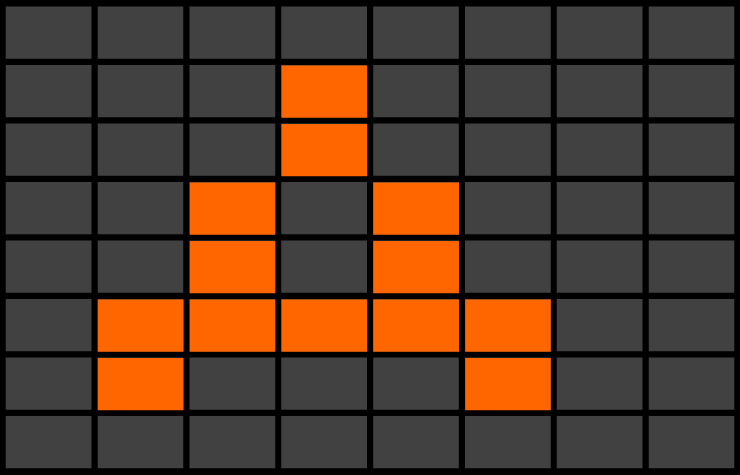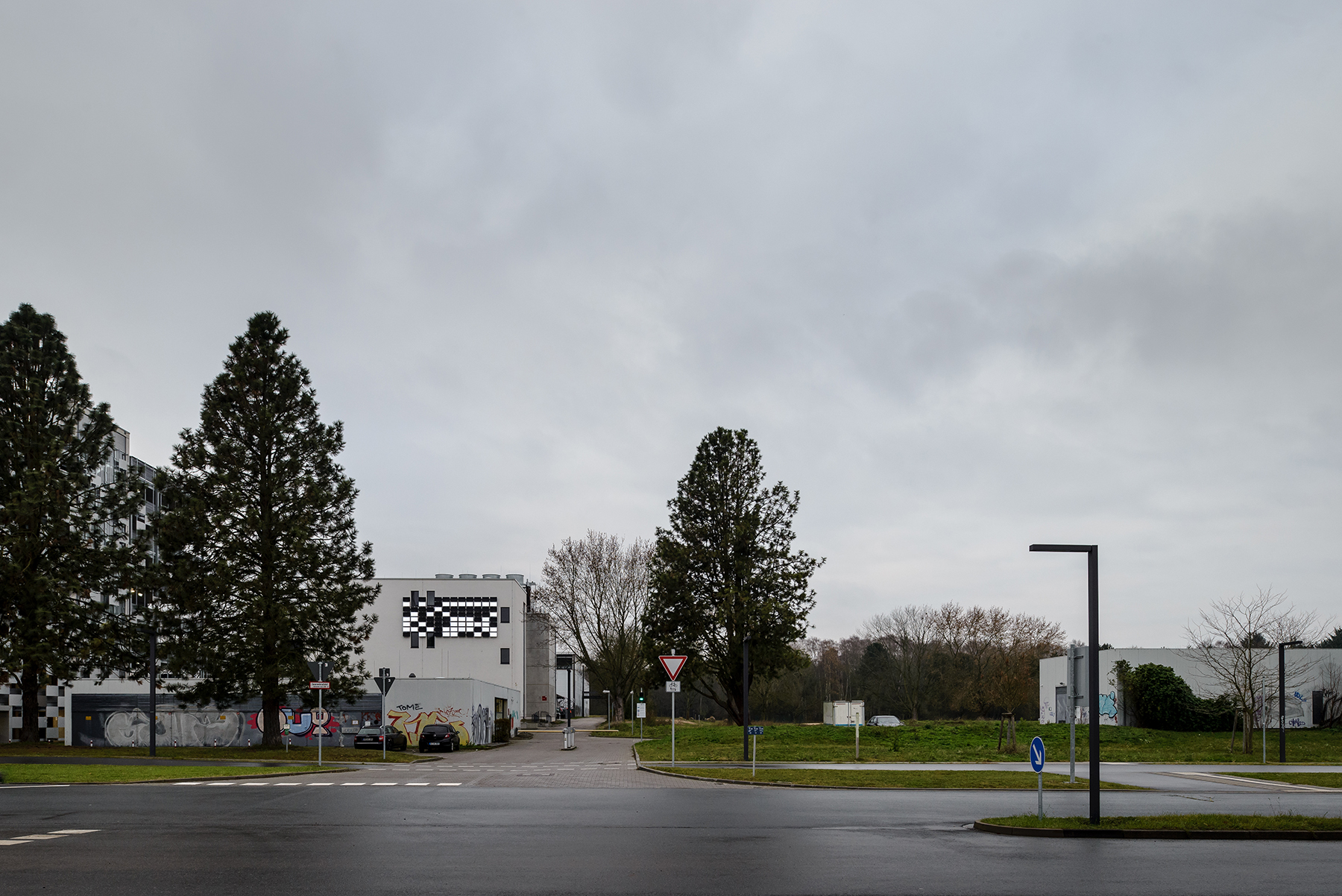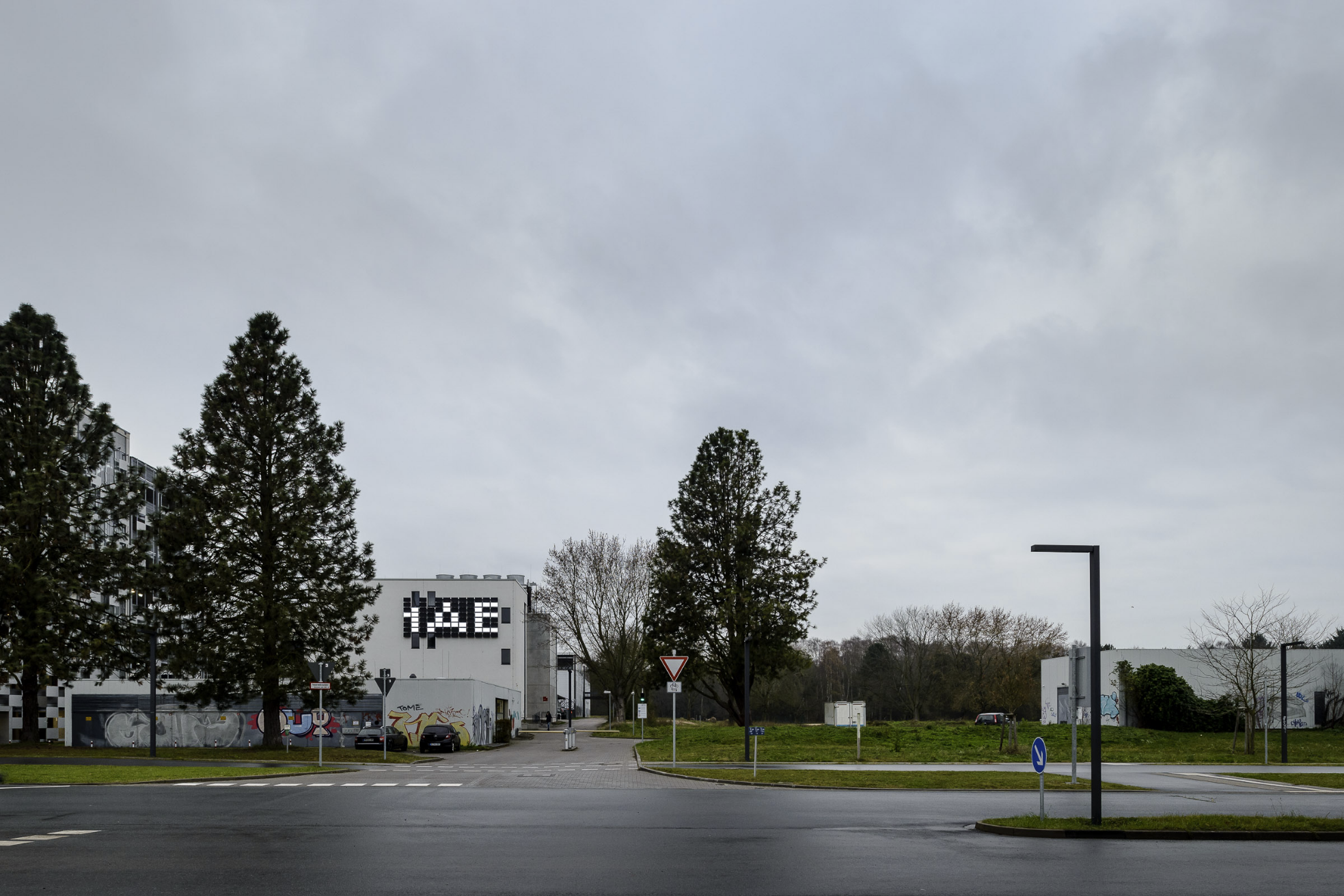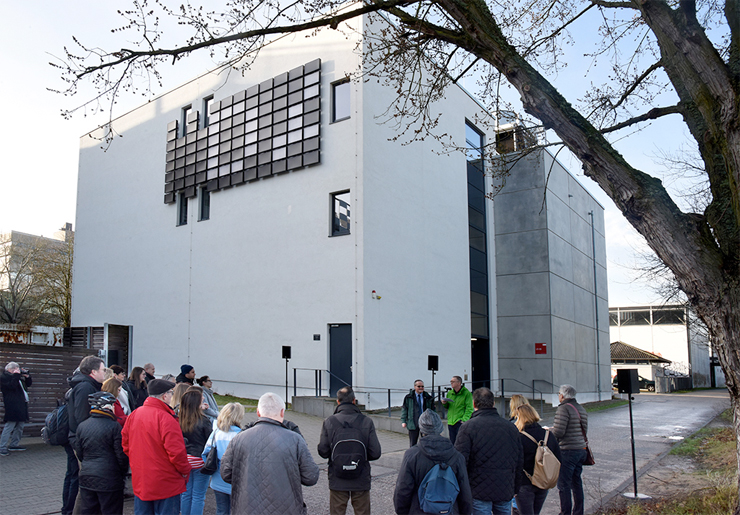Karwath+Todisko pixel fonts
Published Feb 28, 2020. Last updated Apr 17, 2024.

In 2017, the artist Karwath+Todisko was planning an installation for a building façade and she needed a pixel font. She turned to Luc(as) de Groot. Her installation, mounted on the east façade of the building housing the Darmstadt Technical University’s supercomputer, consists of a 12 × 8 grid with 96 individual lighting elements. On this grid, ideas from the eighteenth-century German mathematician Georg Christoph Lichtenberg are displayed in 8-digit binary code.

Since this code isn’t directly understandable, it alternates with readable text displayed in a pixel font. Text and code each scroll across the grid.
The mechanics of the installation called for non-square pixels. Letterforms are constructed from rectangular shapes. This has beneficial typographic ramifications: vertical strokes become stronger than horizontals.

Lucas created a series of pixel fonts for Karwath+Todisko to choose from. In the end, she picked a wide design utilizing capital letters that were each six pixels high. Although this might sound rather small, when those six “pixels” are stacked on top of each other, the resulting letters are as tall as one floor of the building.



The finished installation is named HLR LICHTENBERG1. The abbreviation “HLR” stands for the German word Hochleistungsrechner, meaning a supercomputer. The piece went up in January 2018 at the Technische Universität Darmstadt, Campus Lichtwiese.